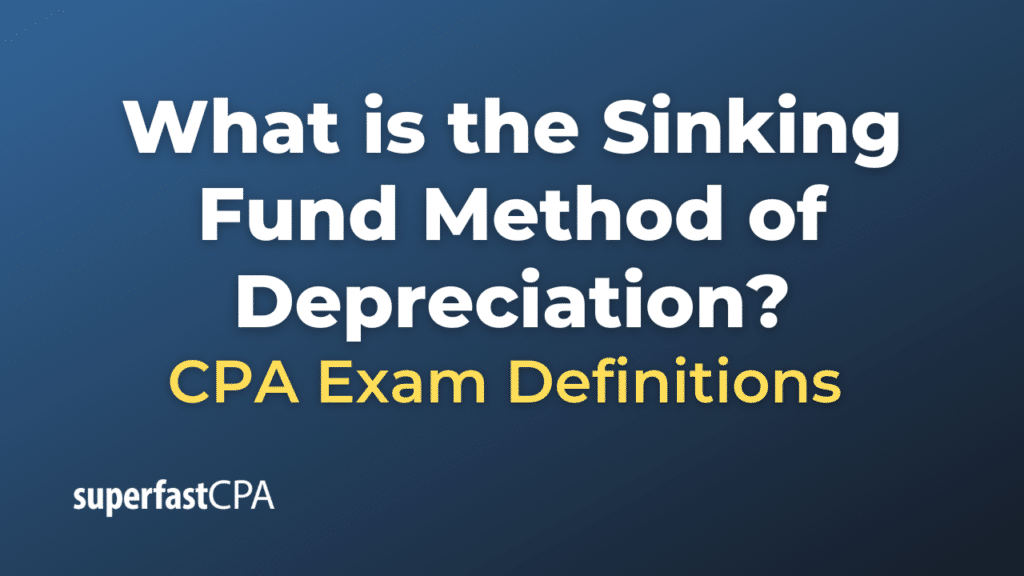Sinking Fund Method of Depreciation
The Sinking Fund Method of Depreciation is a depreciation method that considers not only the depreciation of an asset but also the accumulation of funds to replace the asset at the end of its useful life. Under this method, a fixed sum of money is set aside and invested annually, such that the amount accumulated, along with the interest earned, will be sufficient to replace the asset at the end of its useful life.
The primary concept behind the Sinking Fund Method is that the business is not just accounting for the decrease in the value of the asset (depreciation), but also actively preparing for its eventual replacement by setting aside funds.
How the Sinking Fund Method of Depreciation Works:
- Determine Depreciation: Calculate the total depreciation over the asset’s useful life. This is usually the difference between the initial cost of the asset and its salvage value.
- Calculate Annual Contribution: Determine the annual contribution that needs to be invested in the sinking fund. This will depend on the expected rate of return on the sinking fund investments and the duration of the asset’s useful life.
- Depreciation Expense: Each year, the depreciation expense is recorded as the initial investment into the sinking fund.
- Accumulate with Interest: Over the years, the sinking fund will grow, not just from the annual contributions but also from the compound interest earned.
- Replace the Asset: At the end of the asset’s useful life, the accumulated amount in the sinking fund, including interest, should be sufficient to purchase a new asset as a replacement.
Example of the Sinking Fund Method of Depreciation
Let’s walk through a detailed example of the Sinking Fund Method of Depreciation.
Scenario:
TechCorp purchases a high-end server for its data center at a cost of $20,000. The server has an expected useful life of 5 years and a salvage value of $2,000 at the end of its useful life. TechCorp plans to use the Sinking Fund Method of Depreciation and expects an annual return of 6% on its sinking fund investments.
Objective:
To determine the annual contribution to the sinking fund such that, at the end of 5 years, TechCorp has enough money to replace the server (i.e., $18,000, which is the difference between the cost and the salvage value).
Steps:
- Determine the Future Value: We want to accumulate $18,000 in 5 years with a 6% return.
- Calculate Annual Contribution : Use the Future Value of an Annuity formula to determine the annual contribution.The formula for the future value of an annuity (FV) is:
\(FV = P \times \frac{(1 + r)^n – 1}{r} \)
Where:- P = Annual contribution (which we want to find)
- r = Interest rate per period (6% or 0.06)
- n = Number of periods (5 years)
P = FV × r / (1 + r)n − 1
Plugging in our values:
P = 18,000 × 0.06 / (1+0.06)5−1
P = 18,000 × 0.06 / 1.33822558−1
P = 18,000 × 0.086853
P = $1,563.35
Result:
TechCorp should contribute approximately $1,563.35 to the sinking fund each year for 5 years. With an annual return of 6%, this will allow them to accumulate the desired $18,000 to replace the server at the end of its useful life.
Each year, TechCorp will also record a depreciation expense of $1,563.35, representing the annual contribution to the sinking fund. The actual cash will be invested in some form of security to earn the expected return.
Remember, the success of this method is based on the accurate prediction of the return rate and the consistent annual return on the sinking fund investments. If the investments perform below expectations, there may be a shortfall. If they perform above expectations, there may be an excess.













